There are many ways to analyze a business, but one of the most useful methods is the value chain analysis. In simple terms, it involves looking at every activity that your business engages in. Some of them add value to the product; some (for example, storage) don’t; and some activities (like HR) make the value-adding activities possible.
Examining your value chain will help you to look for ways to structure your business more efficiently. You’ll be able to look at ways to minimize non-value-adding activities, group activities into categories that work well together, and identify the areas that add the most value to your products or service offerings.
The aim of this strategy tool is to recognize which of the internal activities are most valuable to the target market, which ones are menial and result in a high cost, and which can be improved in order to increase one’s competitive advantage. It touches upon the lean management philosophy, as both strive to eliminate wasteful processes and to add value to their consumers by continuously improving their offerings and task execution.

In order for one to understand VCA, they should first break this process down into pieces via Porter’s Value Chain Model.
Before You Begin, Know What Your Market Values
Before you begin an introspective process that looks at how your business adds value to raw materials, it’s worth taking a look at who your customers are and what they want. Remember, value is equivalent to money. What are your customers willing to pay for?
Start by examining why your customers buy from you and what they see themselves as paying for. You may be proud of that little finishing touch in the production process, but if your customers aren’t particularly interested in it or willing to pay for it, it isn’t adding value.
You aren’t going to look at your processes just yet, but you are going to find out what your clients want when they pay for your product. When you have mapped out your current value chain, you’ll be able to review it critically from a customer-oriented perspective.
Porter’s Value Chain Analysis Model
Michael Porter’s VCA Model clearly outlines that when adding value to customers, one should always consider all activities engaged in this process rather than the activities connected to the creation of a product/service.
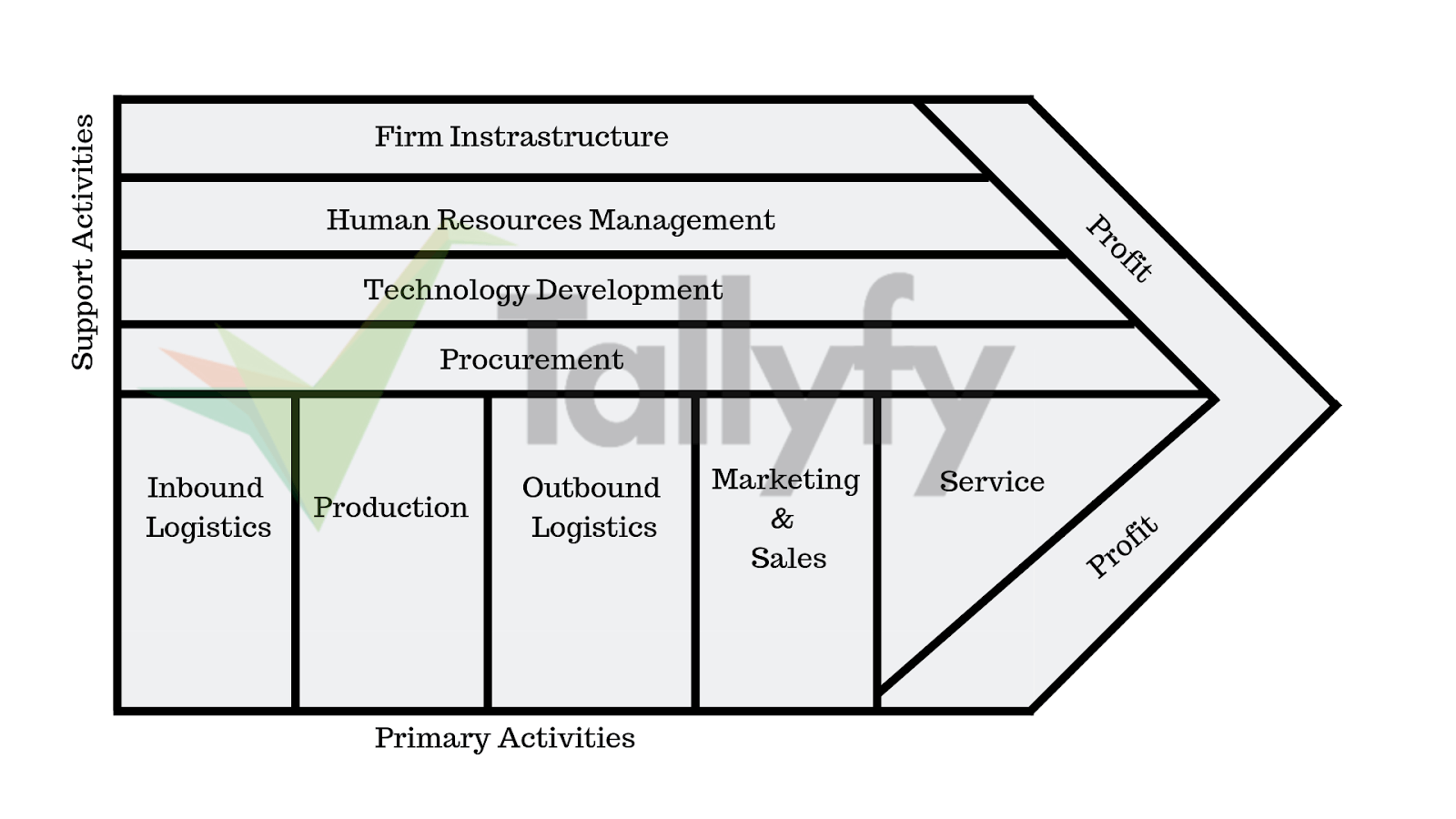
The process of creating a product valuable to the consumers and gaining competitive advantages due to it is much more complex than anticipated. According to the Harvard professor, it is a ubiquitous mistake that people tend to focus on primary activities only.
Regardless of the fact that primary activities contribute directly to the production process, they are not the only benefactors in the adding-value mission. Nowadays, competitive advantage needs support activities, as well – technological innovations or developments in business models or procedures, procurement services, etc.
As a result, as everyone nowadays is striving to directly add value to the production process (primary activities), it is of vital importance to focus on the support ones, too, in order to differentiate yourself from the rest of your competitors.
There are two various ways on how to implement the model, each of which depends on the kind of competitive advantage a company is striving to gain. The two types of advantages are:
Cost Advantage
The cost advantage method is used when companies compete in reducing their costs compared to competitors. This approach breaks the primary activities into smaller segments and helps you analyze each one of them meticulously so that you can identify the cost drivers for each activity.
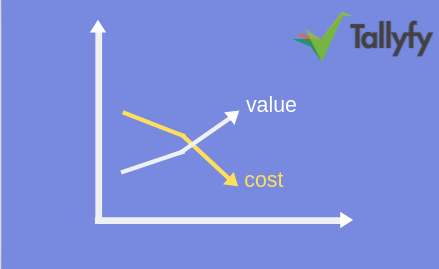
Ideally, the goal is to identify opportunities on how to reduce costs so that you can be more competitive on the market. This can be achieved by understanding the sources of costs and utilizing economies of scale.
Differentiation Advantage
This approach is for firms that strive to gain a competitive advantage over others through differentiation rather than reducing cost. Simply put, this advantage is about creating superior market offerings (products & services). This proves to be a successful strategy since the higher cost is often associated with superior value.
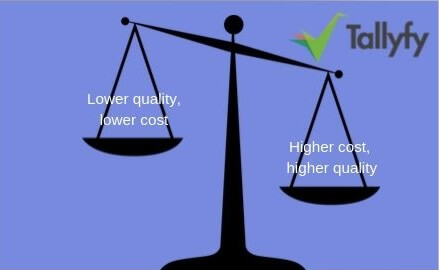
According to consumer behavior studies, people are prone to spend more money on high-quality products when it comes to buying high-involvement goods. This is because consumers usually associate higher cost with higher quality. A couple of award-winning examples are Starbucks, Apple’s market penetration, Samsung Electronics, etc.
Now that we viewed both types of competitive advantages, it is important to note that primary activities contribute to cost advantage (as costs can easily be identified for each activity managed). Analogously, support activities, such as ‘information systems’, or ‘Research & Development’, are most commonly the source of differentiation advantage.
The key takeaway from this point is that if a firm wants to conduct an ongoing & efficient VCA, it is mandatory for one to understand where the difference between both types of advantage is. Moreover, it is vital to focus on both approaches, depending on the activity – rely heavily on cost advantage when thinking about primary activities and, more on differentiation advantage when considering support activities.
Top value chain analysis practical examples
Since VCA’s model is strongly recommended for each business, there are many internationally renowned global players who have adopted it. Thanks to it, their revenue, market share, and competitive advantage has significantly raised.
Some of them are:
Breakdown of Nestle’s Value Chain Analysis
The multinational nutrition company embraced the VCA and created shared value at each stage of the chain. Let’s review the way they implemented Porter’s model into their business in Malaysia:
Primary Activities
The company distributes its products by servicing mainly inland transportation rather than using railways or short sea shipping. This is because Nestle prefers its goods to be delivered in a timely manner and in good shape.
Moreover, the company’s marketing is extremely well-thought, too – Nestle uses only Halal materials that are approved by the state. That way, Nestle, by adhering to Muslim traditions, efficiently ensconced itself in its customers’ minds. As a result, their marketing team allocates less budget for ads, as their brand recognition and word-of-mouth advertising is efficient enough.
Last but not least, the cocoa company saw the growing demand for healthy sweets, thus, releasing its latest products with reduced amounts of sugar (around 34%). Simply by doing so, it reduced the costs from sugar and was able to push down their market prices.
Support Activities
Moving on to Nestle’s support activities, the company’s striving to provide a scent of differentiation there, as well. They’re constantly expanding their network of suppliers and are constantly investing in their workers’ expertise by training them and paying high (for the region) salaries and social benefits. That way, the employees’ churn rate is low.
Moreover, Nestle continuously adds new products to its product line thanks to its R&D department. Finally, the communication between departments is significantly stable and the execution time is quick for a large company such as Nestle.
Breakdown of Starbucks’ Value Chain Analysis
Starbucks is another renowned company that utilizes its value chain analysis, in order to gain the upper hand in the fight for market share.
Primary Activities
Starbucks has over 607 facilities and stores on convenient locations for the delivery of supplies. Additionally, the coffee market leader doesn’t have any intermediaries in delivering its end products to customers. Moreover, they have an effective integration of IT (automation software implementation), which contributes to outbound logistics.
Similar to Nestle’s case, Starbucks also relies heavily on word-of-mouth marketing and corporate social responsibilities. The coffeehouse chain also invests in customer value a lot – they have a customer loyalty card program, meaning that it keeps track of how loyal its consumers are and is constantly struggling to innovate its offerings to keep them satisfied.
Support Activities
In terms of support activities, Starbucks relies heavily on high-quality and fresh products. This contributes to the differentiation advantage – the higher price constitutes a superior quality to consumers.
Additionally, the same as in Nestle’s case, the employee churn rate is low due to competitive remuneration packages, along with social benefits provided by the company. Starbucks also invests in new technology all the time to optimize processes and to speed up the production process.
How to Implement and Use VCA in Your Business
After reviewing two extremely successful VCA implementations in the contemporary market, let’s go through a step-by-step guide on how to embed this approach in your business, too.
Step 1: Determine the primary and support activities of your company
Identifying the types of activities that actually form the value chain is as important to implementing VCA as ABC is to learning to read. As a result, you need to apply them to your company so that you can easily see all the actions involved in the development of your market offerings.
Step 2: Identify and analyze the value and cost of each of these activities
Once you’ve identified the primary and support activities, it is of vital importance to map all these activities. Once a map value stream is created, you’ll be able to see which one of them adds value to your client or organization as a whole.
Analogously, by seeing the big picture, you’ll also be able to look at the cost of each activity – how many employees (labor) does an activity require? How much does a certain raw material cost and can it be substituted? By having an answer to such questions, you’ll be able to identify the cost drivers associated with each activity and to know how to prioritize them, which ones to keep, and, eventually, which ones to dispose of.
More on how to create a value mapping stream can be found here.
Step 3: Determine ways to gain a competitive advantage
Once you’ve followed the aforementioned steps, you can easily see the value chain analysis and where your business is prospering. However, creating the VCA is just half the battle – the true challenge lies within improving from this analysis. And the best action one can do is to strive to gain a competitive advantage.
Here are the steps you need to undertake when discovering each type of advantage (be it cost or differentiation):
- Discovering cost advantages – after you have mapped the value stream, you can easily identify where your strengths and weaknesses lie. However, when talking about primary activities, you need to focus more on cost advantages. Hence, after identifying the cost associated with each activity, you need to seek ways to optimize and diminish it.This can be done by distributing your equipment as efficiently as possible (to the right centers and facilities), integrating automation software to require fewer people to perform a task, A/B testing to discover which marketing activities work best for your company, etc. Remember, the less your primary activities cost, the more you can push your prices down and gain cost advantage compared to competitors.
- Discovering differentiation advantages – similar to the case above, but this time you have to focus on the support activities and on what your customers value the most about them. Thus, you need to use this knowledge and to focus on this – the more valuable differentiation you have from your competitors, the merrier for your company in the long-run.For example, you can find cheaper suppliers, motivate your employees with various merit-based methods to keep the churn rate low, integrate several tech solutions to your organization, in order to make processes smoother, faster and more efficient (a business process management software, for example).
Step 4: Repeat the analysis
Like any other process in the business world, if there is no perseverance, the competitive advantage will be temporary. As a result, you need to put a dedicated VCA team to monitor these processes and to always try to optimize them and make them “leaner” by analyzing all activities involved.
Benefits of Value Chain Analysis
After reviewing how to embed a value chain analysis in your business, it is time to explain why one should do it. The most common advantages of VCA are:
- Gain a competitive advantage and boost profits – higher customer value and reduced redundancy would inevitably lead to an increase in sales and gained a competitive advantage.
- Improved product/service – by constantly analyzing the primary and support activities, along with what is deemed valuable by consumers, the quality of the market would improve and become more efficient.
- Increase sustainability – by mapping the value chain process and removing menial tasks that fail to contribute in any way to your end product while improving your valuable offerings, your company’s sustainability and long-run adaptability will increase.
- Eliminate waste and reduce costs – apart from increasing sustainability, by eliminating activities that constitute a higher price or deplete your employees’ limited time, you will reduce your company’s costs.
- Stronger brand recognition – by adding a constant value to your customers and striving for both differentiation and cost advantages, your brand recognition will benefit and consumers will be more prone to switching to you from competitors.
- Applicable for any type of business – as stated above, your industry is of little importance; as long as you strive to create a value chain and to gain a competitive advantage from it, you can apply this method to any industry.
Limitations of Value Chain Analysis
Nevertheless, analyses that aim to improve the quality of work and to add value while minimizing cost can have drawbacks. Among the most renowned disadvantages of VCA are:
- VCA is difficult to be created – even though in our article this process consists of only four steps, VCA creation is a very challenging task – data gathering can be tardy and menial, identifying what adds value or not can be subjective (as consumer behavior is irrational), and the deployment of the plan can be a subject of labor and time-intensive feasibility.
- Maintaining the VCA can be a difficult process – creating it is just half the issue – maintaining the VCA can deplete your employees’ time to the extent that they won’t be able to focus on other tasks. As a result, the implementation of certain IT solutions should be considered.
- High implementation cost – VCA, as stated above, is a never-ending process, because competition never sleeps and continuous benchmarking should be applied in order to survive above the threshold.
Thus, for a company, which has never used VCA before, the implementation cost can be high – the team assigned to it should be properly trained to monitor the process, conducting benchmarking can be time-consuming and expensive, and changes in a process can always cost a lot at first.
- Additional incurred costs if you implement an IT solution – as stated above, in order to optimize the maintenance of VCA, IT solutions, such as ERP systems should be considered due to the complex procedures and need for constant monitoring. However, implementing such a solution can be an extra incurred cost, which not many companies (especially smaller ones) can afford.
Using and implementing Value Chain Analysis using an Automation Software
VCA is a very effective, yet costly tool (both time-wise and money-wise). Following all of the aforementioned steps and doing them manually can deplete most of yours and your employees’ time. Therefore, there are many IT solutions available to assist you in such cases.
A good way to save time in implementing a VCA is to use a business process management software (BMPS) to automate time-consuming tasks on your behalf.
Nevertheless, you should note that BPMS solutions on the market can cost a great deal. Therefore, if your budget is limited, you can go for software that would cost less and still support you in your activities and scale with your business.
Tallyfy is a solution worth considering!
Tallyfy is a BPMS solution that helps you automate processes and execute business decisions and tasks without requiring much monitoring from you and your employees. 
This cloud-based automation tool can eliminate workflows and make processes more expedient. That way you won’t have to worry about repetitive responsibilities associated with monitoring the value chain analysis (such as checking the progress of tasks, micromanaging your team, or manually doing the value map stream).
Additionally, Tallyfy is extremely affordable for small to mid-sized businesses. It has a free trial package for newcomers to try out. Thus, if you enjoy the software, you can easily switch to a paid version, in order to unleash this BPMS full potential.
Let’s go through implementing the four steps above but with Tallyfy, so that you can see how it can be useful:
Determine the primary and support activities of your company
As Tallyfy is not an AI-driven tool, it cannot conduct analyses on your behalf without your consent. However, you can give this specific task to somebody and set up workflow automation. That way, when you’re expecting from your employee (for example, Nick) to send you a report with the determined activities of your company, you can set Tallyfy’s automation to alert you each time an email comes from Nick. 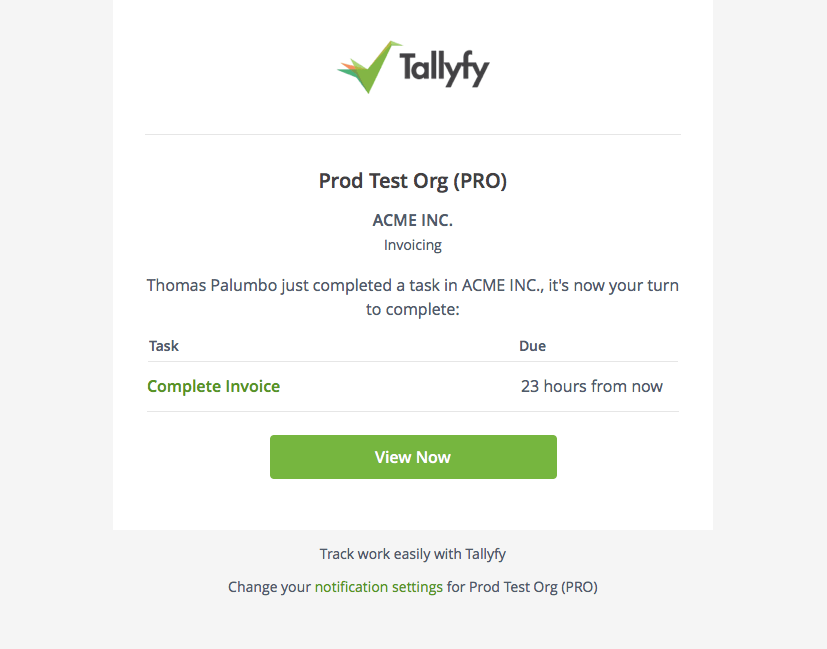
Moreover, you can automate this process even further and to set the tool to instantly download the sent file and store it into your drive.
Even though Tallyfy cannot directly determine the primary and support activities of your business, you can distribute this task to your employees and navigate their progress through Tallyfy’s automation.
Identify and analyze the value and cost of each activity
In identifying value, Tallyfy can help you in a number of ways:
- When conducting primary research results (from surveys, for example), we tend to spend too much time manually storing all the information on our workstations. With Tallyfy, you can automate this process so that when a survey result is conducted, the tool will store the data in your drive, while you can focus on other duties of a higher significance.Additionally, Tallyfy can analyze the results and present them to you in visual representations, such as graphs and statistical polls.
- You can set the software to detect each time someone posts something about your brand through keyword automation. Then, you’ll always be on track of how consumers perceive your offerings and will be able to add value to them by knowing what to focus on.
- Mapping the value stream, as stated above, can take a lot of your time, especially when done manually; With Tallyfy, you can map the processes (from production to dispatchment of product). Moreover, through the tool, you’ll be able to monitor and navigate the progress of the mapping.
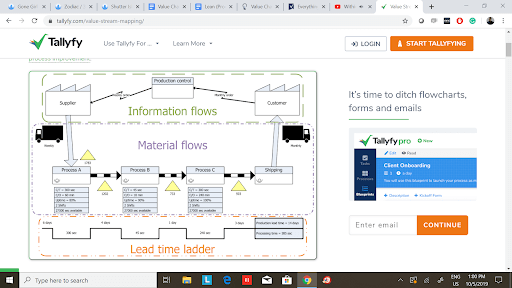
That way, you’ll be able to speed up the process of listing the activities associated with your production process and to see which of them bring value and which – cost.
Determine ways to gain a competitive advantage
Tallyfy can be again put into good use when we talk about discovering both types of advantages:
Cost advantage:
When seeking ways to cut costs from primary activities, Tallyfy’s features can help in a number of way. For example, inbound logistics is directly connected to inventory process management. Thus, you can set Tallyfy to notify you each time you’re running low on a certain type of material so that your team can always stay on track and order more.
Additionally, you can easily create an automation flow that will distribute where each material should go upon arrival and to which facility it should be distributed.
That way, you’ll push down your costs and optimize your workforce as fewer people will have to monitor the VCA and will be able to focus on more important tasks. Moreover, you won’t have to hire additional employees to tackle such manual processes, as you’ll have the software to do that.
Finally, you can set Tallyfy to analyze your marketing & sales effectiveness based on specific metrics and to see which strategies are inefficient, yet expensive.
Simply put, Tallyfy, with its automation abilities, can contribute to pushing down your costs in the primary activities section so that you can get one step closer to competitive advantage.
Differentiation advantage:
The BPMS tool can alleviate your life not only by automating tasks but also by showing you their status, too.
You can set specific key performance indicators and alerts to notify you every time a process has progressed or is finished. That way, you won’t have to micromanage your team and you still will be able to measure process performance and see what should be improved. Let’s take the following example from the human resource department:
Imagine onboarding a new employee and having to train them to carry out tasks and to constantly check their progress; instead of having your HR department to waste time on that, they can set Tallyfy to track the progress of how the new hire’s training is proceeding.
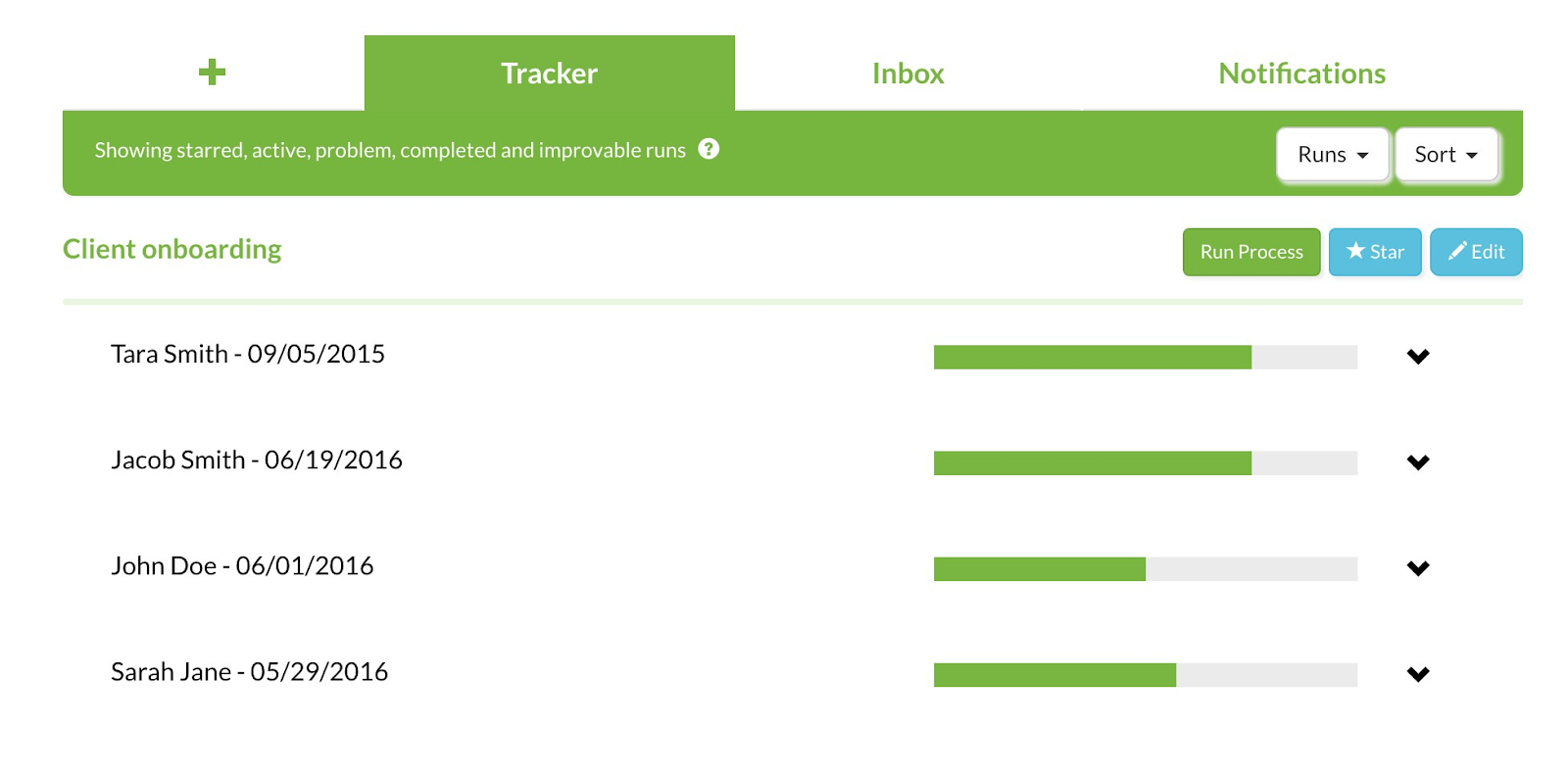
This is possible with the software’s real-time tracking, decision & logic algorithm, and ability to be easily integrated into other existing systems, such as Gmail, Outlook, Azure, etc.
Moreover, you and your team can get an email notification each time the new employee finishes a certain type of training.
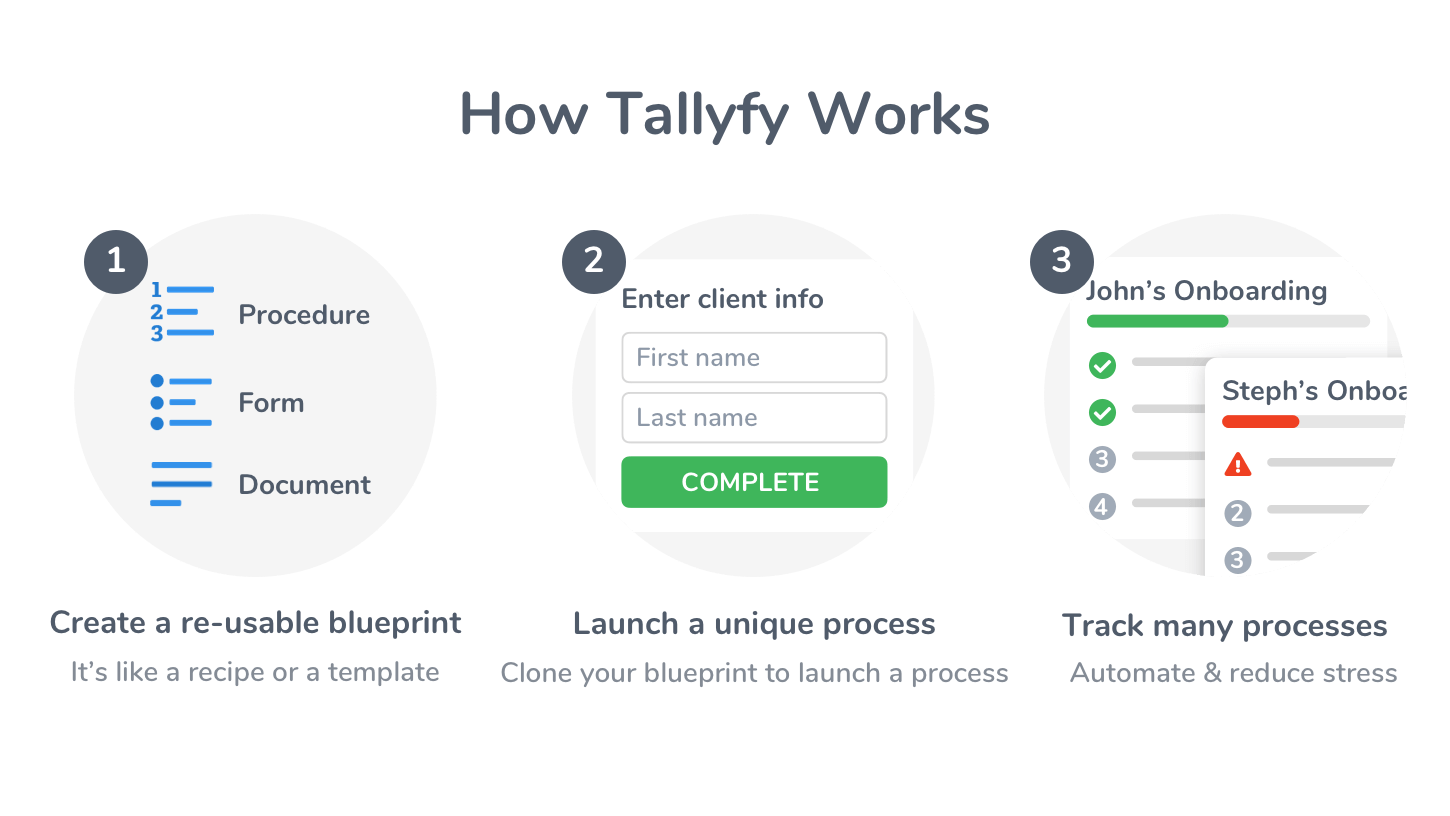
That way, instead of micromanaging their progress, your human resource department can focus on other tasks that would contribute to the improvement of your support activities – for example, implementing a new merit-based payment system to keep the staff motivated and eager to overperform.
Let’s consider another example for the procurement team:
You and your coworkers can set Tallyfy to alert you each time your inventory is running low on a specific type of material. That way, not only that you won’t risk running out of market offerings while sales are booming, but you also will save time in terms of monitoring and checking the inventory.
You can set a notification to alert you each week about the status of your inventory. As a result, you’ll be able to shun the possibility of forgetting to restock or accidentally to oversell. Analogously, your procurement team won’t have to manually check the inventory which would save a great deal of their time.
On a separate note, they can even use Tallyfy’s notification feature to schedule meetings and calls with your company’s suppliers and to keep track of the communication process.
Repeat the analysis
By following the aforementioned steps, you not only have a well-performing VCA, but you have also used Tallyfy to improve your primary and support activities. That way, you can streamline your operations since you’ll be able to see which activities add value to your customers, which of them discern you from your competitors, and which could be easily removed to diminish costs.
When repeating the analysis, all you need is to create a template with Tallyfy. This is a generic template for workflow automation which you can create and re-use for various purposes. That way, you’ll save time as you won’t have to create each automation from scratch.
With Tallyfy’s templates, you’ll be able to integrate the software into each mandatory activity from Porter’s Value Chain Analysis Model and to take the best out of it.
Wrapping it up
Creating a well-performing value chain analysis is a mandatory process nowadays. The market is replete with competitors; thus, the battle for market share and satisfied customers has never been so vicious.
As a result, in order to discern yourself from the rest and to survive above the threshold, you need a system, a model that will cut down your costs while making customers come back to you. Porter’s Value Chain Model is a useful step to start from and to strive to streamline your operations while maximizing revenue.
Nevertheless, its implementation, albeit useful, can cost you a great deal of trouble, time, and resources, which you may lack. Therefore, considering automation software to support you can be a very clever technique.
This is why Tallyfy is here to the rescue!
This cloud-based integration tool is extremely user-friendly, easily integratable, highly efficient, and affordable.
Give the free trial a chance by clicking here. We’d love to introduce you to the unexplored world of automation where managing your VCA at a mainstream price is possible.

